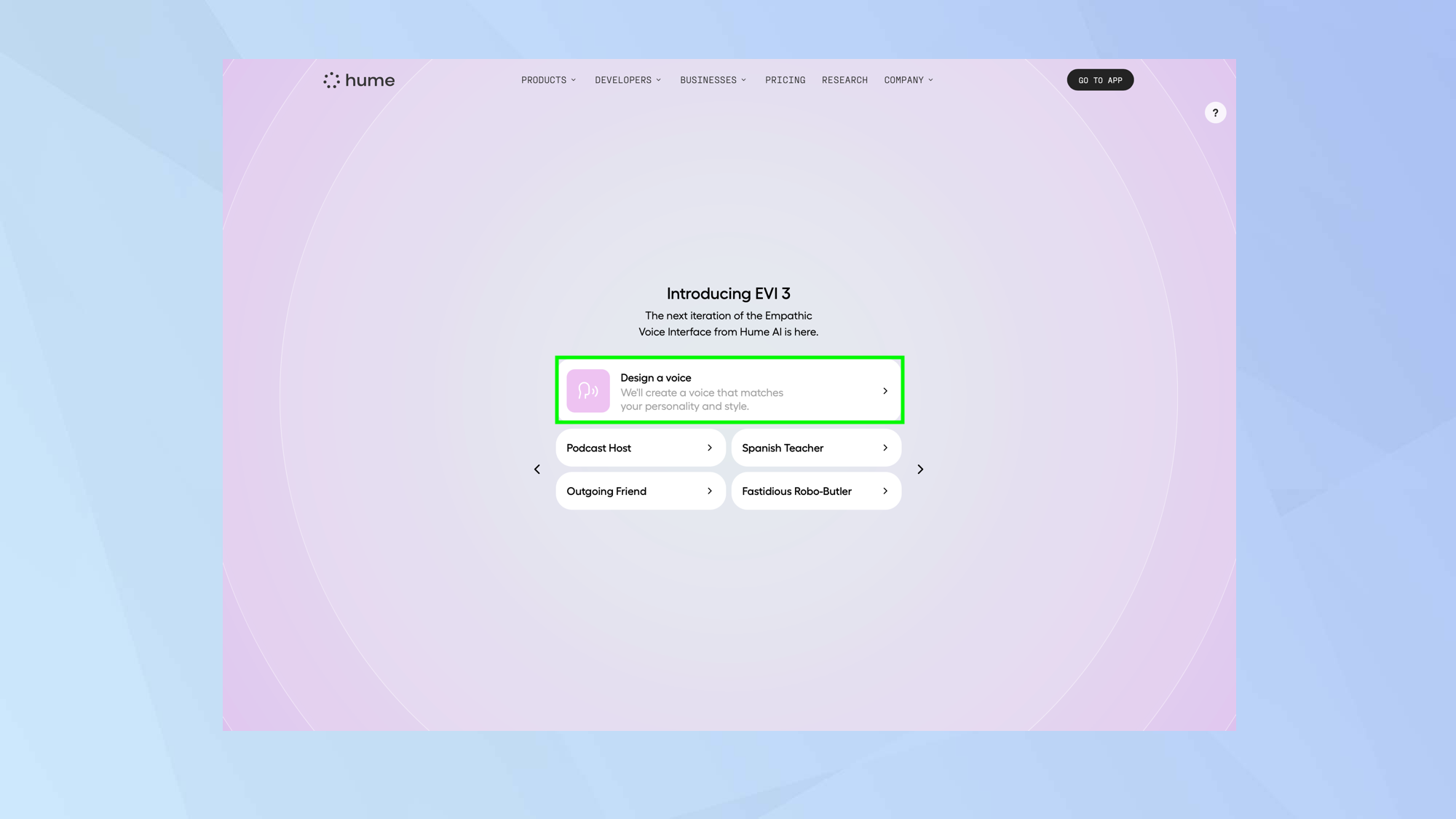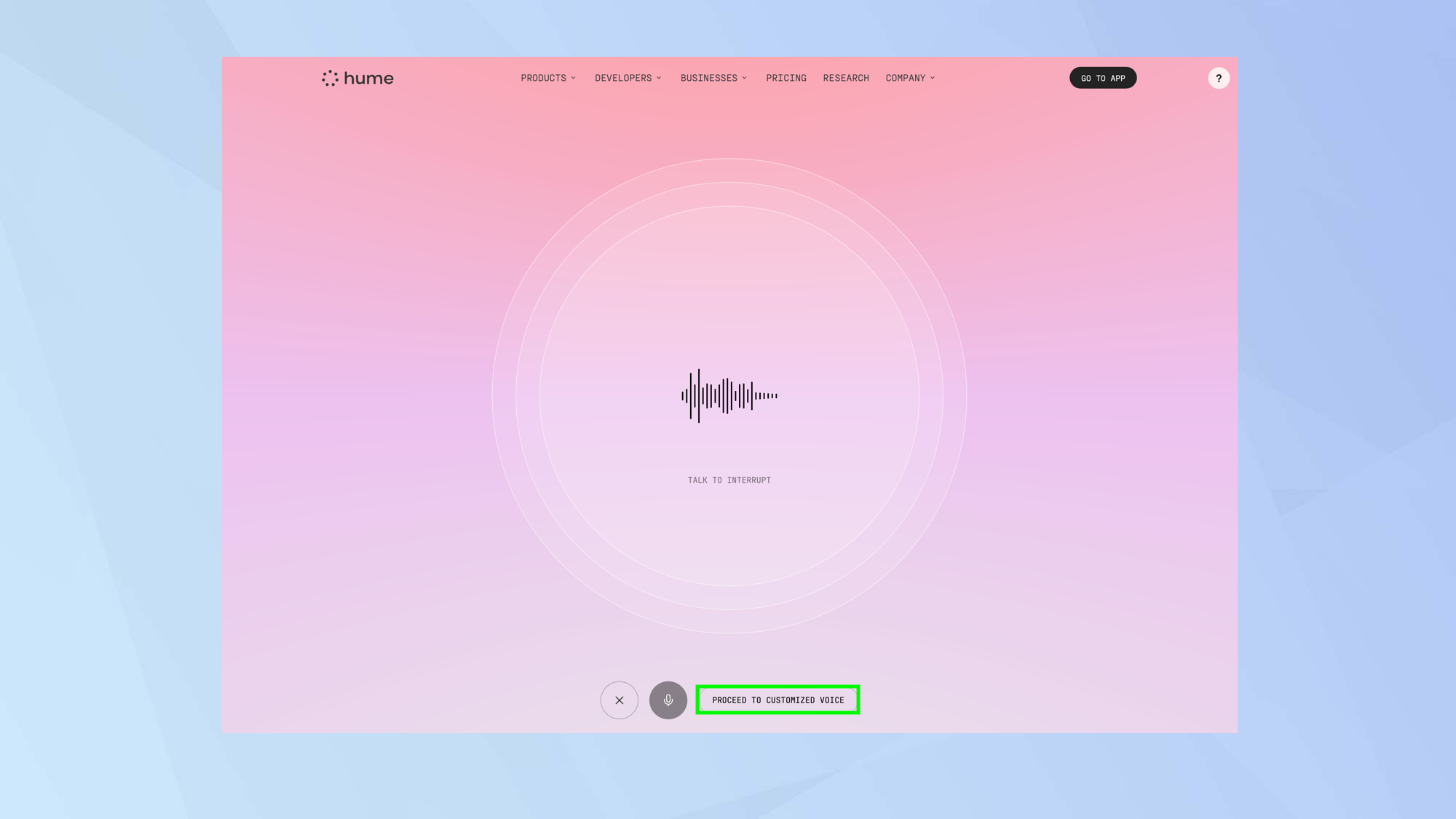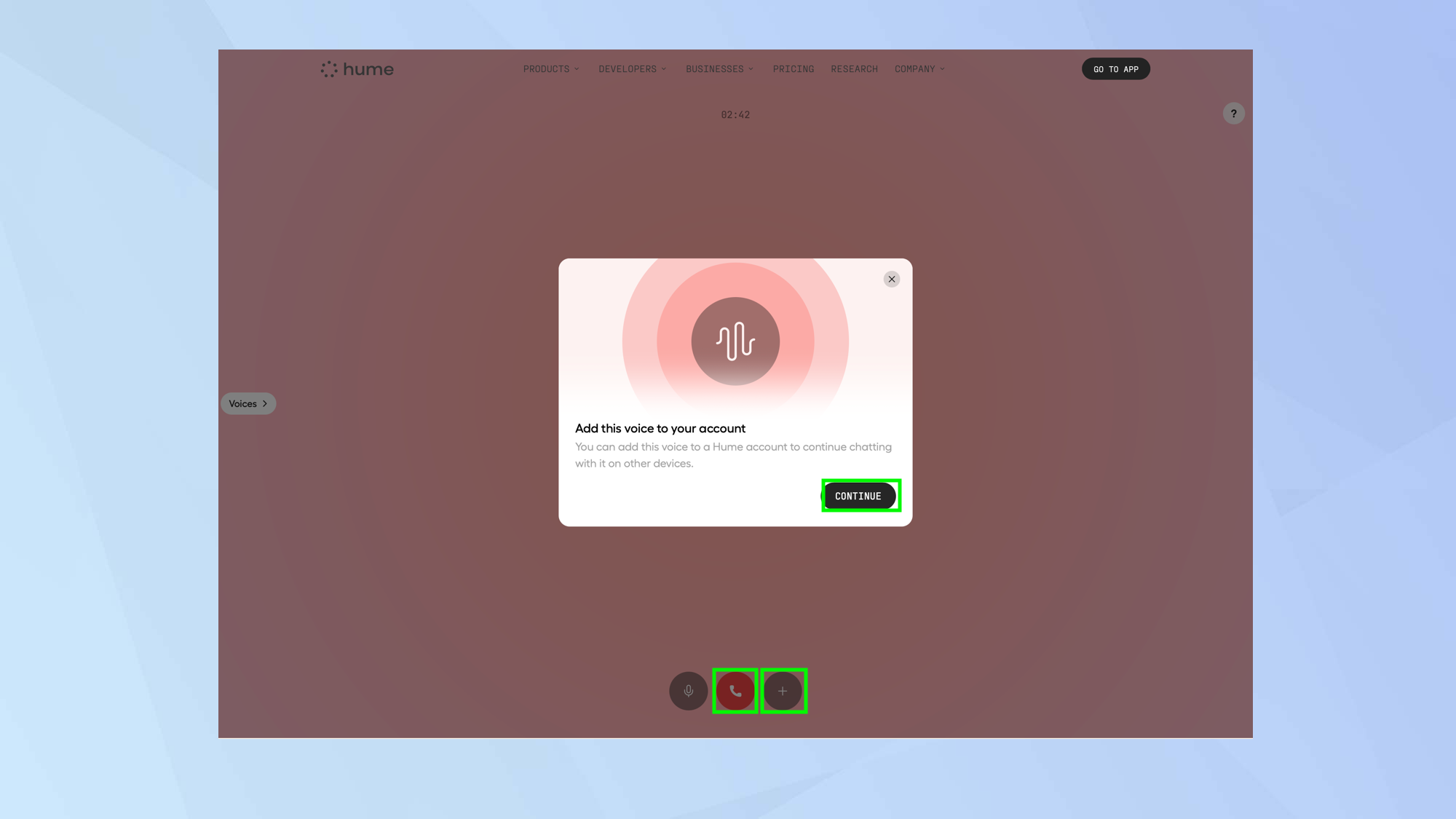You can build your own AI voice from scratch with Hume — here's how
Hume gives you control to create expressive, human-like AI voices

Hume is a chatbot which seeks to bring expressiveness, realism and emotional understanding to voice AI. It's designed to read the emotion in your voice, meaning conversations can feel more natural and personable.
And now, thanks to the introduction of EVI 3 (a model that captures the full range of voices and speaking styles in one model), you can speak with any voice and personality, customizing them to suit your exact needs.
You don’t need to pay to play around with the system, but I would suggest signing up for an account because it gives you access to more AI features. EVI 3 requires a back-and-forth verbal conversation, but if you prefer typing, you can use the Octave text-to-speech model instead.
Hume's EVI 3 is well worth trying as it's the best AI voice generator around right now, outperforming GPT-4o in blind tests across empathy, expressiveness, and audio quality. Let's check it out.
1. Grant microphone access

Go to Hume.ai and you will be able to immediately make use of EVI 3, the platform’s new empathic voice-to-voice model.
To begin generating a natural-sounding customised voice, simply select Design a voice — but be aware that you will need to grant access to your device’s microphone because the creation process is entirely verbal.
Since you can’t use text prompts, you may also want to be somewhere a little private and quiet.
2. Describe a voice

Hume’s AI will start a conservation with you. It will introduce the concept of creating an AI voice and personality, and it will ask you to list the qualities that you want the voice to have.
You don’t need to wait for the AI to finish communicating. You can interrupt whenever you wish and, to speed things up, we advise you to do this..
So what can you say? Well, you could, for example, say: “give me a high-pitched, laid-back sarcastic voice in a New York accent”. Hume will acknowledge this and ask some follow up questions to get an idea of the personality.
Would you like the AI to be blunt and to the point? Do you have any particular situations in mind? That kind of thing.
3. Start interacting

Eventually, Hume AI will stop asking questions. It will tell you that it has enough information and it’s ready to generate a custom voice for you.
You can also select Proceed to Customized Voice if you feel you’ve added enough. You’ll land on the chat screen. You can engage in a conversation and get a feel for the voice and how it sounds, working out if it’s what you wanted.
The more you chat, the more you will know if it’s reacting well.
4. Give your feedback

If you like the voice, click the thumbs-up symbol. If you don’t like the voice, click the thumbs-down symbol.
Doing the latter will give you an option to try creating the same voice again — click Retry and it will re-generate, hopefully giving you something better.
5. End the conversation

When you’ve had enough of chatting, you can do one of two things. You can click the + icon and add the voice to your account – select Continue (if you don’t have an account you will be prompted to set one up).
You can also exit the chat. Just click the red button and you will return to the home screen. From there, you can select Design a new voice or select Talk to custom voice if you want to resume the conversation with the same voice.
And there you go. You now know how to design your own AI voice using Hume. Other services can perform a similar task. Discover how to turn text into audio with ElevenLabs AI Reader and learn how to use Hendra to clone your voice.
You may also want to explore OpenVoice, a text-to-speech AI tool that clones your voice in seconds.
Get instant access to breaking news, the hottest reviews, great deals and helpful tips.

David Crookes is a freelance writer, reporter, editor and author. He has written for technology and gaming magazines including Retro Gamer, Web User, Micro Mart, MagPi, Android, iCreate, Total PC Gaming, T3 and Macworld. He has also covered crime, history, politics, education, health, sport, film, music and more, and been a producer for BBC Radio 5 Live.
You must confirm your public display name before commenting
Please logout and then login again, you will then be prompted to enter your display name.










